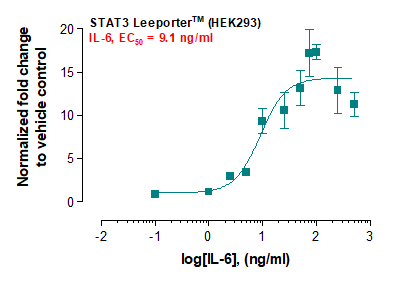Recombinant Mouse Dickkopf-Like Protein 1/DkkL1/Soggy-1 (C-6His)(Discontinued)
Shipping Info:
For estimated delivery dates, please contact us at [email protected]
| Amount : | 50 µg |
| Content : | Lyophilized from a 0.2 µm filtered solution of PBS,pH7.4. |
| Storage condition : | Lyophilized protein should be stored at -20°C, though stable at room temperature for 3 weeks. Reconstituted protein solution can be stored at 4-7°C for 2-7 days. Aliquots of reconstituted samples are stable at -20°C for 3 months. |
| AA sequence : | LPIHDVDSQQNTSGFLGLQRLLQSFSRLFLKNDLLRDLDNFFSSPMDFRDLPRNFHQEENQEHRMGNHTLSSHLQIDKVTDNQTGEVLISEKVEASIEPERNPEGDWKVPKVEAKEPPVPVQKVTDSLHPEPRQVAFWIMKMPRRRTQPDVQDGGRWLIEKRHRMQAIRDGLRGGAREDSLEDGVHIPQHAKLPVRKTHFLYILRPSQQLVDHHHHHH |
Source: Human Cells.
MW :25.5kD.
Recombinant Mouse Dickkopf-like protein 1 is produced by our Mammalian expression system and the target gene encoding Leu21-Leu230 is expressed with a 6His tag at the C-terminus. The glycoprotein Dickkopf-like1, also known as soggy-1, is a member of Dickkopf (Dkk) family which modulates Wnt signaling by binding to the Wnt co-receptor lipoprotein receptor-related protein (Lrp) via two Cys-rich regions. Dkkl1 shows unique homology to a discrete region in Dkk3, however, it lacks the Lrp binding region that enables Wnt modulation. Dkkl1 expression is gradually upregulated during the development of mouse testis and corresponds to the mouse spermatogenesis. Mouse Dkkl1 is detected in the embryo, as well as in the developing skeleton, eyes and neural tissue. In adult animals the expression of Dkkl1 is specific for spermatocytes and spermatids, where it regulates spermatocyte apoptosis mediated by Fas death ligand (FasL). Dkkl1 plays a critical role in male mammalian spermatogenesis.
MW :25.5kD.
Recombinant Mouse Dickkopf-like protein 1 is produced by our Mammalian expression system and the target gene encoding Leu21-Leu230 is expressed with a 6His tag at the C-terminus. The glycoprotein Dickkopf-like1, also known as soggy-1, is a member of Dickkopf (Dkk) family which modulates Wnt signaling by binding to the Wnt co-receptor lipoprotein receptor-related protein (Lrp) via two Cys-rich regions. Dkkl1 shows unique homology to a discrete region in Dkk3, however, it lacks the Lrp binding region that enables Wnt modulation. Dkkl1 expression is gradually upregulated during the development of mouse testis and corresponds to the mouse spermatogenesis. Mouse Dkkl1 is detected in the embryo, as well as in the developing skeleton, eyes and neural tissue. In adult animals the expression of Dkkl1 is specific for spermatocytes and spermatids, where it regulates spermatocyte apoptosis mediated by Fas death ligand (FasL). Dkkl1 plays a critical role in male mammalian spermatogenesis.
Endotoxin : Less than 0.1 ng/µg (1 IEU/µg) as determined by LAL test.
For Research Use Only. Not for use in diagnostic/therapeutics procedures.
| Subcellular location: | Secreted, Cytoplasmic vesicle |
| Post transnational modification: | N-glycosylated during spermatogenesis. Not N-glycosylated in mature sperm. |
| Tissue Specificity: | Testis-specific. Abundant in the seminiferous tubules where it is associated with developing spermatocytes. Expressed only in testis (at protein level) (PubMed:15892050, PubMed:19596310). Not detectable on postnatal days 4 and 9 but after day 18 it gradually increased as the development of testes progressed. Expressed at high levels in testis and at weak levels in epididymis (PubMed:22817830). |
|
There are currently no product reviews
|














.png)













